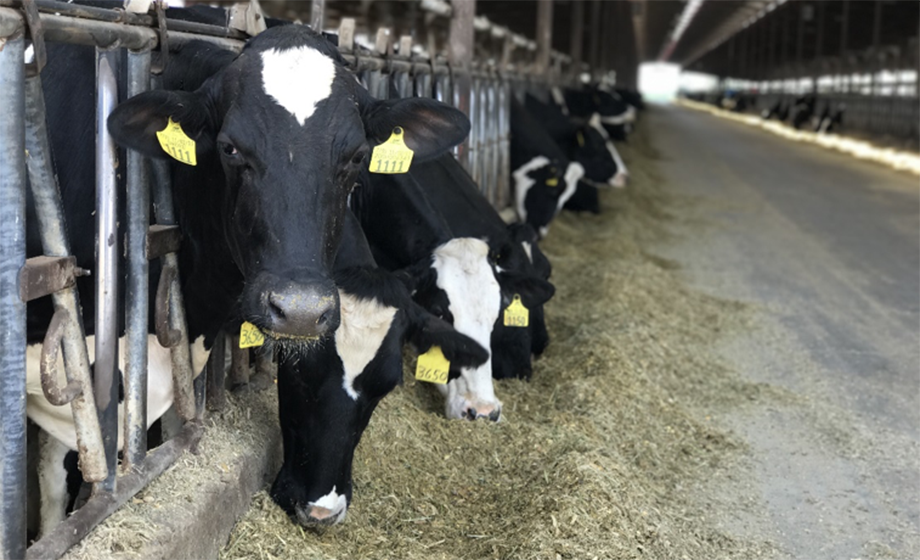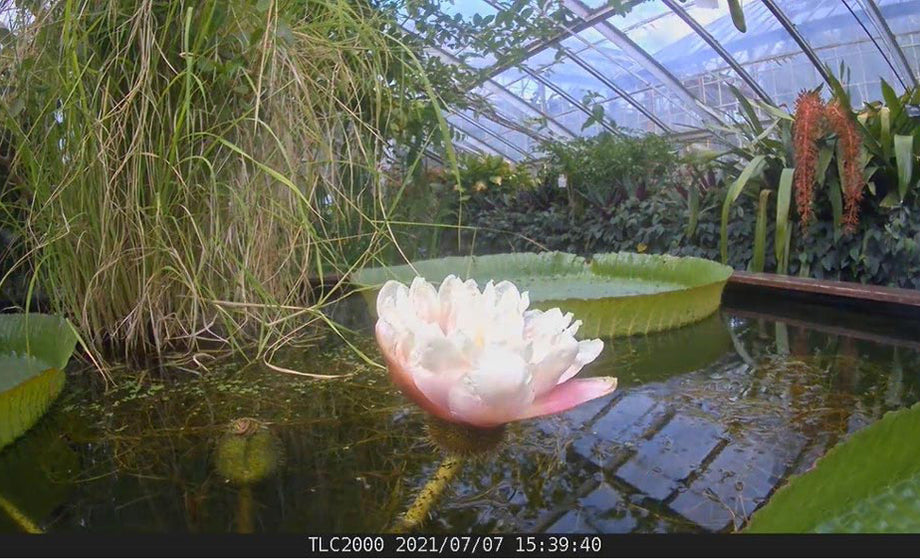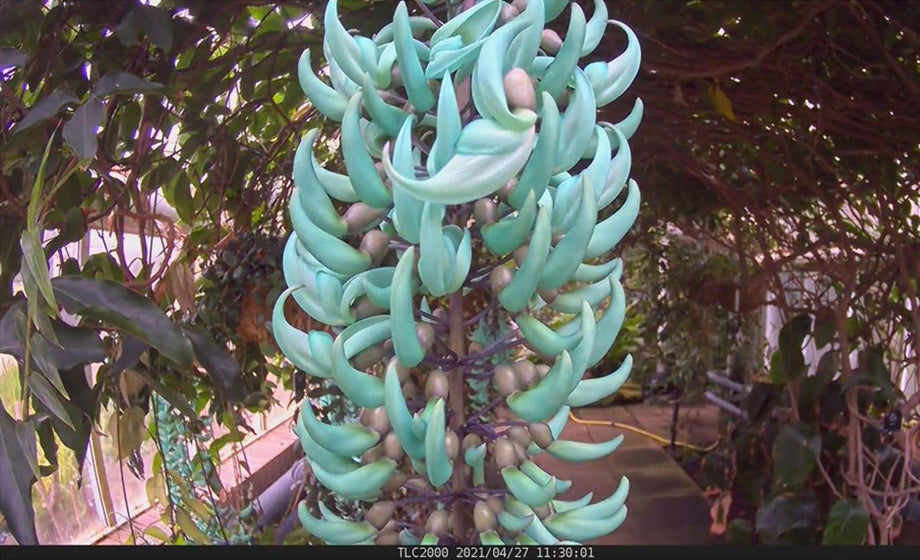Guest writer Brian Dougherty, Field Agricultural Engineer, Iowa State University Extension and Outreach

Prior to obtaining his engineering degree, Brian was the co-owner/operator of a dairy farm in Northeast Iowa. Part of his job now is working with the University’s Extension dairy specialists to help dairy producers improve the efficiency, profitability, and environmental outcomes on dairy farms.
One of the ways that they have been doing this is with time lapse camera technology. They have discovered that time lapse can help producers identify and fix bottlenecks in their facilities to improve cow comfort and performance. Brinno cameras are very helpful in catching issues that might go undetected without the use of time lapse.
Camera technology is becoming more commonly used in dairy facilities. Video monitoring of cattle and their surroundings can save time and quickly identify problem areas. However, one disadvantage with video cameras is that someone needs to be monitoring the video feed in real-time in order for it to be useful. Problems that occur more slowly over time or that happen when people are not present may not be identified.
Time lapse cameras are a relatively new technology that can fill this gap and help identify harder-to-detect issues in dairy facilities. These cameras work by taking photos at a preset interval and then automatically stitching those photos together to create a video clip. The video file can be saved on a computer or external storage device and played back on any compatible screen. The disadvantage of time lapse cameras is that the footage cannot be viewed in real-time. The great advantage of time lapse video is that multiple hours or days of activity can be viewed in minutes. This saves time and helps to identify problems that may otherwise go undetected. They are also relatively inexpensive, with most cameras selling for $100 to $400, depending on features and accessories. With a bit of planning, you can capture very useful footage of your dairy facilities. This information can be used to help identify and correct problems with facility design and management.
Applications for time lapse cameras
Time lapse cameras can be used anywhere that monitoring is needed.
Common applications include:
- Monitoring cow behavior andtraffic flow around robotic milking units to identify bottlenecksor poor positioning of gating or other equipment.
- Monitoring feed alleys or bunks toidentify problems with feed deliverytiming, inadequate feed push-up, or lack of bunk space.
- Evaluatingstall usage behaviorthat may indicate problems with overcrowding, lack of bedding, stall avoidance, or lack of resting time.
- Monitoring cowbehavior around waterersto determine if they are properly located and sized.
- Identifying problems withlighting systemincluding night-time lighting, improper light timer settings, or malfunctioning of the extended-day lighting system.
- Evaluating animal behavior associated withheat stressand ventilation systems.
- Evaluatingtimelinessof barn scraping, stall grooming, and other management activities.
- Monitoringcalf behaviorand usage of automatic calf feeders.
- Capturing video forsocial mediaand farm promotional activities.

Still image from Brinno BCC100 time lapse video footage captured on September 10, 2020 at New Day Dairy near Clarksville, Iowa.
Camera setup
Capturing useful footage requires proper initial setup of the time lapse camera. The most important settings are the frame rate, capture interval, light settings, and image quality. The frame rate (FPS = frames per second) determines how many images will be viewed per second during playback. A setting of around 10 FPS generally works well for dairy facilities. Increasing the frame rate makes a smoother video and increases playback speed, but too high of a frame rate may make it difficult to monitor activity during playback. When viewing the video on a laptop or computer, you may be able to do some additional adjustment of playback speed. The capture interval determines how often the camera takes a photo. For robots and cow flow monitoring try a capture interval of 5 to 10 seconds. For monitoring stall usage or feed bunks a 15 to 20 second interval generally works well. A short capture interval will show more detail but will increase the length of the video. Most cameras have an image quality setting. The better the image quality the clearer the video will be, but it can also drastically increase the size of the video file. A lower quality image will reduce file size and file transfer times and is generally sufficient for monitoring dairy facilities. Light settings are also important. Turn on ‘low light recording’ and/or ‘night scene’ or similar settings for nighttime monitoring. This will not affect daytime image quality.
Camera installation
Time lapse cameras typically have a wide-angle lens. With strategic placement the camera may be able to capture footage for evaluating several different areas of the barn at the same time. Hold the camera as close as possible to the installation location and use the viewing screen to determine what will show in the video frame.
- The higher the camera is mounted the easier it will be to monitor activity. Make sure the view will not be blocked by overhead doors or other obstructions.
- Locate the camera where it won’t be bumped or damaged and is out of reach of livestock.
- A protective case is highly recommended to prevent dust and moisture from damaging the camera.
- A wall mounting kit, mounting clamp, or tripod will be needed to mount the camera. Bungee cords are also useful for securing the camera during recording.
- Avoid mounting the camera near fans or other equipment if possible. This may cause the camera to vibrate and distort the video.

Brinno BCC100 time lapse camera package with protective case and adjustable swivel wall mount.
Tips for capturing quality video footage
If the camera has a clock or ‘timestamp’ feature, turn this on and make sure the camera is set to the correct date and time. This is very useful for determining what time of day activities are occurring and for verifying proper function of lighting systems.
Recording in very low light conditions can be difficult. Time lapse cameras are generally designed to capture images at night, but some background light is needed. If the barn is in total darkness the video will be unusable. You may need to assess the footage after a few days and move the camera to a different location if lighting is causing shadows over feed bunks or other areas.
Another option is to add some nighttime or temporary lighting, but make sure that it does not interfere with extended day lighting systems. Small (~7.5 watt) red bulbs can be used during the dark period.
In a dusty areas the lens cover or protective case should be wiped off periodically to improve image quality. Locate the camera away from fans, inlets, or vents during cold weather to prevent fogging of the lens cover. Battery life will vary depending on camera model and settings. Put new batteries in the camera if it will be installed for a week or more to reduce the risk of battery failure during monitoring, especially during cold weather. Some models can be plugged into a wall outlet but this will limit where the camera can be installed.
------------------------------------------------------------------------------------------------------------------------------------------
Additional resources:
Webinar: Precision Technology Webinar Series Utilizing Time Lapse Cameras



